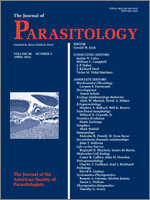Plasmodium yoelii 17XL was used to investigate the mechanism of Plasmodium falciparum-caused cerebral malaria, although its histological effect on other mouse organs is still unclear. Here, histological examination was performed on mice infected with P. yoelii 17XL; the effect of P. yoelii 17XL infection on anemia and body weight loss, as well as its lesions in the brain, liver, kidney, lung, and spleen, also was investigated. Plasmodium yoelii 17XL-infected red blood cells were sequestered in the microcirculation of the brain and in the kidney. Compared with the nonlethal P. yoelii 17XNL strain, infection by P. yoelii 17XL caused substantial pulmonary edema, severe anemia, and significant body weight loss. Although P. yoelii 17XNL and 17XL produced a similar focal necrosis in the mouse liver, infection of P. yoelii 17XL induced coalescing of red and white pulp. Mortality caused by P. yoelii 17XL may be due to cerebral malaria, as well as respiratory distress syndrome and severe anemia. Plasmodium yoelii 17XL-infected rodent malaria seems to be a useful model for investigating severe malaria caused by P. falciparum.
How to translate text using browser tools
1 April 2012
Comparative Histopathology of Mice Infected With the 17XL and 17XNL Strains of Plasmodium yoelii
Yong Fu,
Yan Ding,
Tao-Li Zhou,
Qian-yi Ou,
Wen-yue Xu
ACCESS THE FULL ARTICLE

Journal of Parasitology
Vol. 98 • No. 2
April 2012
Vol. 98 • No. 2
April 2012




